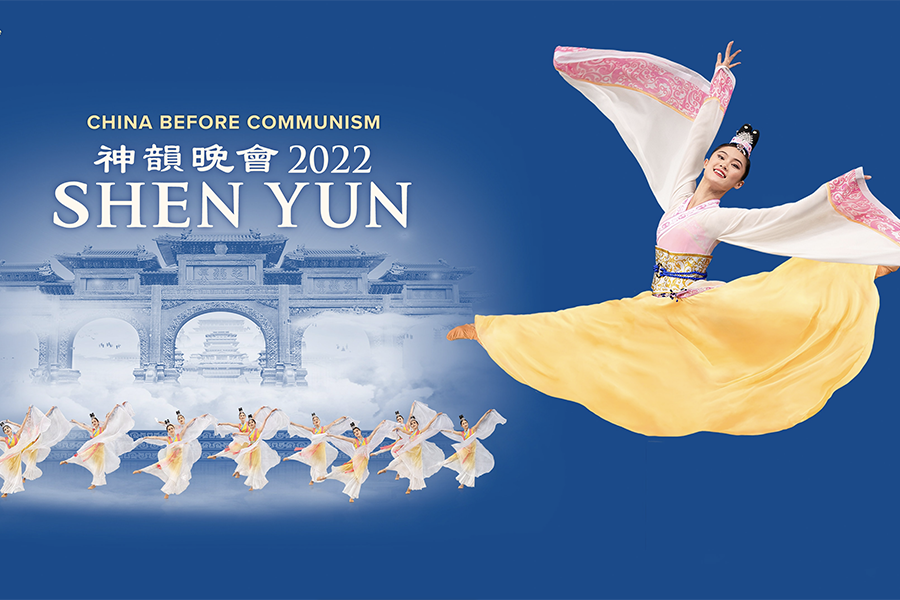Shen Yun performance successfully conveys Chinese culture, stories
May 6, 2022
The dancers glide effortlessly. Their bright, eye-catching costumes flutter across the stage. The orchestra plays louder. Unraveling their sleeves, the dancers twirl the fabric through the air. Like fluid water, their sleeves wave in a mesmerizing pattern. The display invokes the beauty and intricacy of traditional Chinese dance. The audience erupts in applause.
Shen Yun successfully showcases traditional Chinese stories and culture through its unique and colorful show, unveiling something new in every act. The show is organized by Falun Gong, a Chinese spiritual movement headquartered in New York state.
Under the motto of “5,000 Years of Civilization Reborn,” Shen Yun aims to preserve and revitalize Chinese culture before communism, which they believe is endangered.
The 2 1/2-hour show has 16 total parts, similar to vignettes. Shen Yun is a different show every year. The majority of the show consists of ensemble dances that retell stories and myths from Chinese culture or exhibit classical Chinese dances. The ensemble is accompanied by Shen Yun’s orchestra, which combines classical Western instruments as well as Chinese instruments. Along with dancing, a few of the acts also feature traditional Chinese singing and instruments, such as the two-stringed erhu. A narrator and interpreter share the history and significance of what was displayed each between sets. While these variances in acts are helpful in breaking up the similarity of the show, the abundance of dancing in Shen Yun ultimately felt somewhat repetitive toward the end.
Shen Yun manages to present something new in every act, from acrobatics, set design, costumes, and tone.
Their innovative blend of modern technology and traditional Chinese dance is something that really stood out. Shen Yun uses a dynamic background screen, which uses 3D projection. It offers movement and liveliness that a traditional backdrop cannot. With impeccable timing, the dancers jump off the back of the stage and appear on the screen behind them, as if they were flying away, much to the awe of the audience.
One highlight of the show is “The Rookie Monks,” which blends traditional Chinese dance with comedy, telling the story of Buddhist Monks hatching a plan to enact revenge on a group of bandits. Another impressive display is “Plum Blossom in Spring,” which features vibrant hand-made costumes and impressive group displays. During the act, the dancers held a portion of a flower and positioned themselves with others to create many large-scale pieces.
Although the show was largely positive, the ulterior messaging behind it felt forced and overbearing. Falun Gong, which organizes Shen Yun, interjected many of its beliefs within the show. The vocal piece of the show features the lyric “behind atheism and evolution an evil specter lurks.” Shen Yun also heavily critiques the oppression of Falun Gong practitioners experience under the current Chinese government. Despite this, much of the messaging was positive and focused on the development and benefits of Falun Gong.
Shen Yun skillfully showcases traditional Chinese culture, accompanied by vivid costumes, amazing choreography and a variety of unique acts.
Shen Yun’s legacy
Plastered on posters, magazines, and even billboards, advertising for Shen Yun can be seen almost anywhere.
The Shen Yun Performing Arts organization was founded in 2006 in New York’s Hudson Valley. They first started performing in 2007, and have since expanded to six groups and roughly 480 performers. Shen Yun aims to revive traditional Chinese culture after decades of communist rule, which Shen Yun believes they have substantially destroyed.
Their dancers trained at the Fei Tian Academy of the Arts and Fei Tian College in New York, which are closely associated with Shen Yun.
Shen Yun is operated and funded by the Chinese religious and spiritual movement Falun Gong. The movement values truth, kindness and self-restraint through various exercises, including meditation and traditional Chinese qigong exercises. Also known as Falun Dafa, the movement was founded in 1992 by Li Hongzhi. He currently resides at the movement’s headquarters, Dragon Springs, a religious refuge for tens of thousands of Falun Gong practitioners in upstate New York.
Shen Yun has received some controversy for including Falun Gong’s religious views within their show, which opposed evolutionism and atheism. In their pursuit to portray the oppression the Chinese government imposes on its people, Shen Yun depicts the persecution of Falun Gong followers in their shows. Falun Gong insists that China has killed thousands of its practitioners, citing numerous human rights abuses. Although disputed, they claim that China has harvested organs from imprisoned Falun Gong adherents.
Chinese embassies have also sought to shut down Shen Yun performances in many countries because they believe the performances are cultist and attacks against the Chinese government.
Shen Yun has been amid controversy in both the nature of its performances and from the spiritual movement organizing it.
